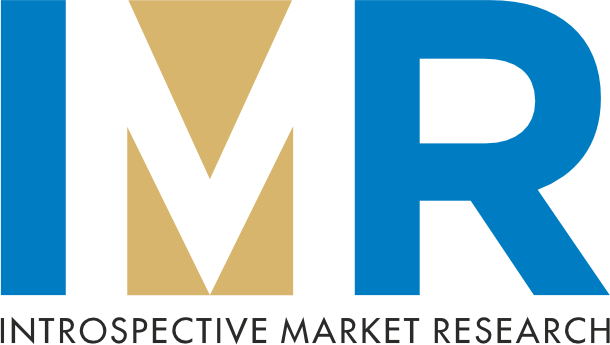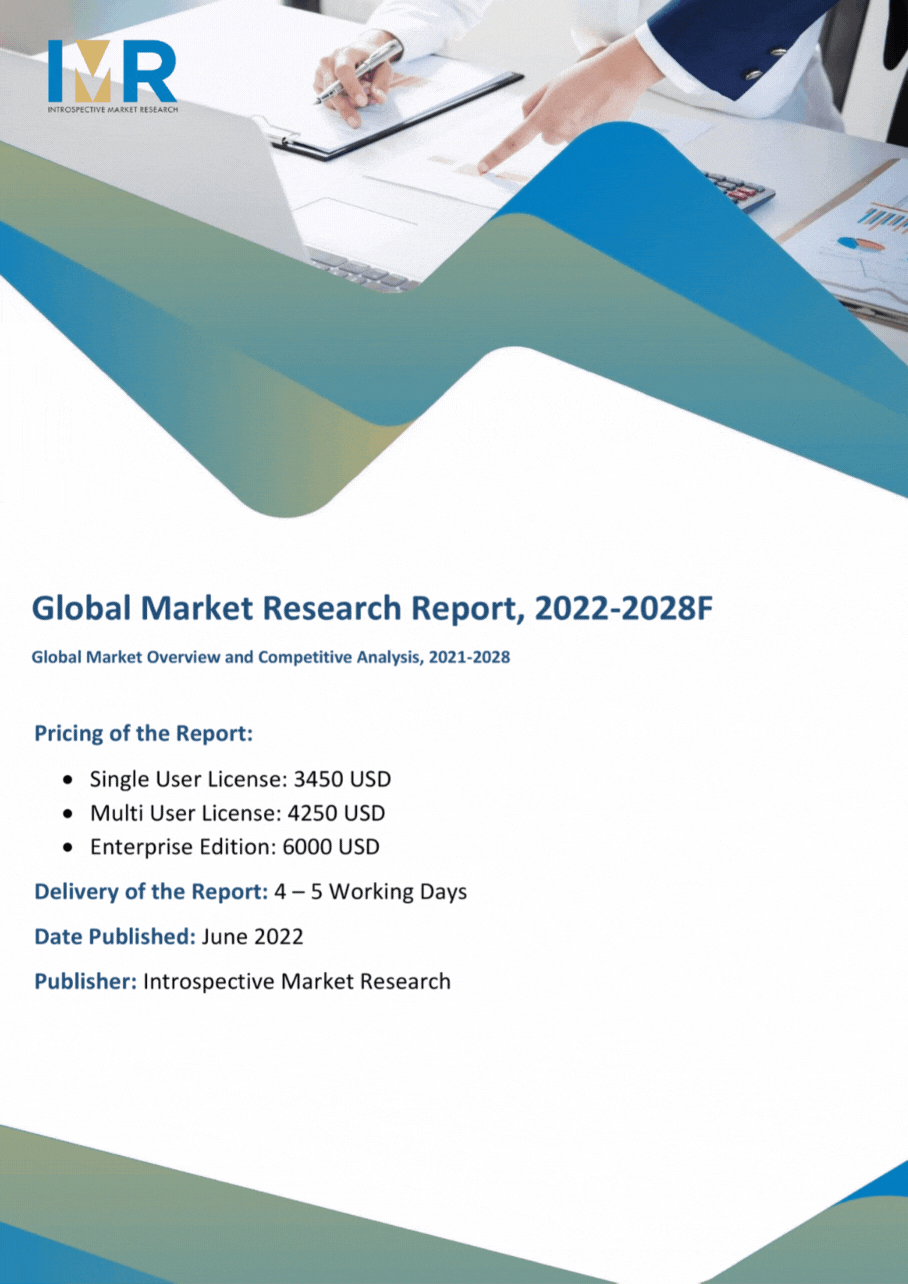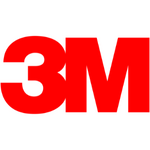Food Antimicrobial Additives Market Synopsis
Food Antimicrobial Additives Market Size Was Valued at USD 2.87 Billion in 2022, and is Projected to Reach USD 5.63 Billion by 2030, Growing at a CAGR of 8.9 % From 2023-2030.
Food Antimicrobial Additives are the type of food preservatives that inhibit the growth of spoilage and pathogenic microorganisms such as bacteria and fungus in food products.
- The rapid market growth is attributed to the continuous increase in demand for packaged as well as processed foods due to changing lifestyle trends, concern regarding synthetic chemical additives, foods preserved without artificial additives and an increase in awareness about health benefits among consumers worldwide. Antimicrobial food additives play an important role in the prevention and inhibition of microbial growth in food products.
- However, in the meat and meat product industry, every large scale and small- scale producer is rigorously suspending the usage of nitrites due to their harmful carcinogenic effect; this further enhances the utilization of natural antimicrobial additives, like nisin and natamycin, to inhibit mold growth. The rise in utilization of food antimicrobial additives to prevent such harmful effects, is thus, inhibiting the market growth.
- Moreover, the added benefits of these additives, such as enhancing the high dimensional stability, heat & chemical resistance, and chemical stability is further estimated to boost the market growth of food antimicrobial additives over the projected period.

Food Antimicrobial Additives Market Trend Analysis
Rising Demand in The Food and Beverages Sector
- There is a strong demand for food antimicrobial additives in various applications with the number of COVID-19 positive cases increasing day by day globally. Rising consumer awareness prevailing of the importance of food antimicrobial additives is growing rapidly, which therefore increases the demand for antimicrobials in the food and beverages sector.
- In addition, the global antimicrobial food additives market is mainly driven by the higher growth of the food & beverages industry due to emerging trends in various food products, beverages and confectionaries. Food antimicrobials play a crucial role in expanding shelf life and increasing product safety by ensuring better hygiene standards.
- Also, the utilization of food antimicrobial additives in beverages to increase the shelf life, especially carbonated drinks and fruit juices leads to rise in demand, and thereby propelling growth of food antimicrobial additives market in the projected year.
Product Innovation and Technology creates an Opportunity
- The current demand of the market is concentrated on food antimicrobial additives that meet the minimum regulations or standards which are mandatory in the region and are which are cost-effective.
- The rising demand for non-toxic plastics with improved features such as, hardness, high antimicrobial activity, durability, and transparency is creating an opportunity for the manufacturers.
- Many large-scale plastic and paint coating manufacturers are increasing the use of antimicrobial additives in their products such as medical equipment, bottles, and food packaging. Therefore, the rising demand for creative and innovative products directs to technological and product innovation, and are further expected to attain a rapid growth over the forecasted years.
Food Antimicrobial Additives Market Segment Analysis:
Food Antimicrobial Additives Market Segmented on the basis of type, application.
By Type, Benzoate segment is expected to dominate the market during the forecast period
- Benzoate is estimated to dominate the market in the forecasted period. The growth is influenced as benzoates possess excellent antimicrobial and anti-fungal properties. They can also be used further as a preservative to increase the shelf life of various foods by preventing yeast, mold, or fungi growth.
- The segment is expected to dominate as it is often found in fruit juices, salad dressings, soft drinks, and jams & jellies. Benzoate salts also helps in preventing the growth of bacteria from any harmful spoilage during production stages and maintaining freshness until consumption.
By Application, Beverages segment held the largest share of 60% in 2022
- Beverages segment is estimated to dominate the market in the upcoming years. Food antimicrobial additives are commonly used in beverages to increase the shelf life of products, especially carbonated drinks and fruit juices. They prevent spoilage by impeding microbial growth, but without affecting the taste or smell of food items.
- The bakery and confectionery sector witnessed a sudden rise in usage of antimicrobial additives owing to the preservative benefits offered by resisting the growth of unwanted microorganisms. Thus, the beverages segment is expected to continue its dominance in upcoming years.
Food Antimicrobial Additives Market Regional Insights:
Asia Pacific is Expected to Dominate the Market Over the Forecast period
- Asia Pacific is the fastest growing region and is expected to dominate the global food antimicrobial additives market in the upcoming years. Owing to the growing consumer awareness about health-related safety standards and infections, growing population and rapid urbanization and expansion of key players in the region, the Asia Pacific is estimated to attain a sustainable growth.
- Bakery products are used vastly in this region due to the evolving lifestyle and trend as well as growing awareness associated with the health benefits. Countries driving the Asia Pacific region include India, Japan and China where the sales of food and beverage products are increasing significantly has also fueled market growth. Japan, is valued as the second largest in South East Asia Pacific and among the top five markets for baked products and is further expected to gain high demand for antimicrobial food additives by end of forecast period.
Food Antimicrobial Additives Market Top Key Players:
- Albemarle Corporation(United States)
- Chemours (United States)
- Dow (United States)
- Milliken & Company (United States)
- Nalco Water (United States)
- Eastman (United States)
- Huntsman International LLC (United States)
- Chemtura Corporation (United States)
- Southern Specialties (United States)
- Performance Materials Group (United States)
- 3M (United States)
- Ashland (United States)
- Rhodia (France)
- BASF (Germany)
- Lanxess (Germany)
- Evonik Industries (Germany)
- Croda International plc (United Kingdom)
- Clariant (Switzerland)
- Lonza Group (Switzerland)
- Solvay (Belgium)
- Akzo Nobel (Netherlands)
- Nippon Shokubai (Japan)
- Nouryon (Netherlands)
- Quantum Hitech (China)
- Sanitized Group (Czech Republic)
Key Industry Developments in the Food Antimicrobial Additives Market:
- In March 2023, BASF announced the launch of its new antimicrobial additive, BASF Silwet Protect 3000. This additive is designed to protect surfaces from microbial growth and is suitable for use in a variety of applications, including food packaging, paints, and coatings.
- In April 2023, Lonza announced the acquisition of Microcide, a company that specializes in the development and production of antimicrobial additives. This acquisition will expand Lonza's portfolio of antimicrobial solutions and provide a platform for further growth in this market.
- In May 2023, DuPont announced the launch of its new antimicrobial additive, DuPont Biofilm Shield. This additive is designed to protect surfaces from the growth of biofilm, which is a type of microbial community that is difficult to remove.
|
Global Food Antimicrobial Additives Market |
|||
|
Base Year: |
2022 |
Forecast Period: |
2023-2030 |
|
Historical Data: |
2017 to 2022 |
Market Size in 2022: |
USD 2.87 Bn. |
|
Forecast Period 2023-30 CAGR: |
8.9 % |
Market Size in 2030: |
USD 5.63 Bn. |
|
Segments Covered: |
By Type |
|
|
|
By Application |
|
||
|
By Region |
|
||
|
Key Market Drivers: |
Rising Demand in the Food and Beverages Sector |
||
|
Key Market Restraints: |
Fluctuation in the Raw Material Prices |
||
|
Key Opportunities: |
Product Innovation and Technology |
||
|
Companies Covered in the report: |
|
||
Chapter 1: Introduction
1.1 Research Objectives
1.2 Research Methodology
1.3 Research Process
1.4 Scope and Coverage
1.4.1 Market Definition
1.4.2 Key Questions Answered
1.5 Market Segmentation
Chapter 2:Executive Summary
Chapter 3:Growth Opportunities By Segment
3.1 By Type
3.2 By Application
Chapter 4: Market Landscape
4.1 Porter's Five Forces Analysis
4.1.1 Bargaining Power of Supplier
4.1.2 Threat of New Entrants
4.1.3 Threat of Substitutes
4.1.4 Competitive Rivalry
4.1.5 Bargaining Power Among Buyers
4.2 Industry Value Chain Analysis
4.3 Market Dynamics
4.3.1 Drivers
4.3.2 Restraints
4.3.3 Opportunities
4.5.4 Challenges
4.4 Pestle Analysis
4.5 Technological Roadmap
4.6 Regulatory Landscape
4.7 SWOT Analysis
4.8 Price Trend Analysis
4.9 Patent Analysis
4.10 Analysis of the Impact of Covid-19
4.10.1 Impact on the Overall Market
4.10.2 Impact on the Supply Chain
4.10.3 Impact on the Key Manufacturers
4.10.4 Impact on the Pricing
Chapter 5: Food Antimicrobial Additives Market by Type
5.1 Food Antimicrobial Additives Market Overview Snapshot and Growth Engine
5.2 Food Antimicrobial Additives Market Overview
5.3 Benzoates
5.3.1 Introduction and Market Overview
5.3.2 Historic and Forecasted Market Size (2016-2028F)
5.3.3 Key Market Trends, Growth Factors and Opportunities
5.3.4 Benzoates: Grographic Segmentation
5.4 Sorbates
5.4.1 Introduction and Market Overview
5.4.2 Historic and Forecasted Market Size (2016-2028F)
5.4.3 Key Market Trends, Growth Factors and Opportunities
5.4.4 Sorbates: Grographic Segmentation
5.5 Propionates
5.5.1 Introduction and Market Overview
5.5.2 Historic and Forecasted Market Size (2016-2028F)
5.5.3 Key Market Trends, Growth Factors and Opportunities
5.5.4 Propionates: Grographic Segmentation
5.6 Lactates
5.6.1 Introduction and Market Overview
5.6.2 Historic and Forecasted Market Size (2016-2028F)
5.6.3 Key Market Trends, Growth Factors and Opportunities
5.6.4 Lactates: Grographic Segmentation
5.7 Nitrites
5.7.1 Introduction and Market Overview
5.7.2 Historic and Forecasted Market Size (2016-2028F)
5.7.3 Key Market Trends, Growth Factors and Opportunities
5.7.4 Nitrites: Grographic Segmentation
5.8 Acetates
5.8.1 Introduction and Market Overview
5.8.2 Historic and Forecasted Market Size (2016-2028F)
5.8.3 Key Market Trends, Growth Factors and Opportunities
5.8.4 Acetates: Grographic Segmentation
Chapter 6: Food Antimicrobial Additives Market by Application
6.1 Food Antimicrobial Additives Market Overview Snapshot and Growth Engine
6.2 Food Antimicrobial Additives Market Overview
6.3 Bakery
6.3.1 Introduction and Market Overview
6.3.2 Historic and Forecasted Market Size (2016-2028F)
6.3.3 Key Market Trends, Growth Factors and Opportunities
6.3.4 Bakery: Grographic Segmentation
6.4 Beverages
6.4.1 Introduction and Market Overview
6.4.2 Historic and Forecasted Market Size (2016-2028F)
6.4.3 Key Market Trends, Growth Factors and Opportunities
6.4.4 Beverages: Grographic Segmentation
6.5 Dairy
6.5.1 Introduction and Market Overview
6.5.2 Historic and Forecasted Market Size (2016-2028F)
6.5.3 Key Market Trends, Growth Factors and Opportunities
6.5.4 Dairy: Grographic Segmentation
6.6 Meat and Meat Products
6.6.1 Introduction and Market Overview
6.6.2 Historic and Forecasted Market Size (2016-2028F)
6.6.3 Key Market Trends, Growth Factors and Opportunities
6.6.4 Meat and Meat Products: Grographic Segmentation
Chapter 7: Company Profiles and Competitive Analysis
7.1 Competitive Landscape
7.1.1 Competitive Positioning
7.1.2 Food Antimicrobial Additives Sales and Market Share By Players
7.1.3 Industry BCG Matrix
7.1.4 Ansoff Matrix
7.1.5 Food Antimicrobial Additives Industry Concentration Ratio (CR5 and HHI)
7.1.6 Top 5 Food Antimicrobial Additives Players Market Share
7.1.7 Mergers and Acquisitions
7.1.8 Business Strategies By Top Players
7.2 DUPONT DE NEMOURS INC. (THE US)
7.2.1 Company Overview
7.2.2 Key Executives
7.2.3 Company Snapshot
7.2.4 Operating Business Segments
7.2.5 Product Portfolio
7.2.6 Business Performance
7.2.7 Key Strategic Moves and Recent Developments
7.2.8 SWOT Analysis
7.3 POLYONE CORPORATION (US)
7.4 NANOBIOMATTERS INDUSTRIES S.L (EUROPE)
7.5 BASF SE (GERMANY)
7.6 MICROBAN INTERNATIONAL (US)
7.7 SANITIZED AG (SWITZERLAND)
7.8 LYONDELLBASELL (NETHERLANDS)
7.9 AVIENT CORPORATION (US)
7.10 BIOCOTE (UK)
7.11 MILLIKEN CHEMICAL (US)
7.12 CLARIANT (SWITZERLAND)
7.13 STERITOUCH (UK)
7.14 DUNMORE CORPORATION (US)
7.15 LINPAC SENIOR HOLDINGS LTD (UK)
7.16 MONDI PLC (UK)
7.17 OTHER MAJOR PLAYERS
Chapter 8: Global Food Antimicrobial Additives Market Analysis, Insights and Forecast, 2016-2028
8.1 Market Overview
8.2 Historic and Forecasted Market Size By Type
8.2.1 Benzoates
8.2.2 Sorbates
8.2.3 Propionates
8.2.4 Lactates
8.2.5 Nitrites
8.2.6 Acetates
8.3 Historic and Forecasted Market Size By Application
8.3.1 Bakery
8.3.2 Beverages
8.3.3 Dairy
8.3.4 Meat and Meat Products
Chapter 9: North America Food Antimicrobial Additives Market Analysis, Insights and Forecast, 2016-2028
9.1 Key Market Trends, Growth Factors and Opportunities
9.2 Impact of Covid-19
9.3 Key Players
9.4 Key Market Trends, Growth Factors and Opportunities
9.4 Historic and Forecasted Market Size By Type
9.4.1 Benzoates
9.4.2 Sorbates
9.4.3 Propionates
9.4.4 Lactates
9.4.5 Nitrites
9.4.6 Acetates
9.5 Historic and Forecasted Market Size By Application
9.5.1 Bakery
9.5.2 Beverages
9.5.3 Dairy
9.5.4 Meat and Meat Products
9.6 Historic and Forecast Market Size by Country
9.6.1 U.S.
9.6.2 Canada
9.6.3 Mexico
Chapter 10: Europe Food Antimicrobial Additives Market Analysis, Insights and Forecast, 2016-2028
10.1 Key Market Trends, Growth Factors and Opportunities
10.2 Impact of Covid-19
10.3 Key Players
10.4 Key Market Trends, Growth Factors and Opportunities
10.4 Historic and Forecasted Market Size By Type
10.4.1 Benzoates
10.4.2 Sorbates
10.4.3 Propionates
10.4.4 Lactates
10.4.5 Nitrites
10.4.6 Acetates
10.5 Historic and Forecasted Market Size By Application
10.5.1 Bakery
10.5.2 Beverages
10.5.3 Dairy
10.5.4 Meat and Meat Products
10.6 Historic and Forecast Market Size by Country
10.6.1 Germany
10.6.2 U.K.
10.6.3 France
10.6.4 Italy
10.6.5 Russia
10.6.6 Spain
10.6.7 Rest of Europe
Chapter 11: Asia-Pacific Food Antimicrobial Additives Market Analysis, Insights and Forecast, 2016-2028
11.1 Key Market Trends, Growth Factors and Opportunities
11.2 Impact of Covid-19
11.3 Key Players
11.4 Key Market Trends, Growth Factors and Opportunities
11.4 Historic and Forecasted Market Size By Type
11.4.1 Benzoates
11.4.2 Sorbates
11.4.3 Propionates
11.4.4 Lactates
11.4.5 Nitrites
11.4.6 Acetates
11.5 Historic and Forecasted Market Size By Application
11.5.1 Bakery
11.5.2 Beverages
11.5.3 Dairy
11.5.4 Meat and Meat Products
11.6 Historic and Forecast Market Size by Country
11.6.1 China
11.6.2 India
11.6.3 Japan
11.6.4 Singapore
11.6.5 Australia
11.6.6 New Zealand
11.6.7 Rest of APAC
Chapter 12: Middle East & Africa Food Antimicrobial Additives Market Analysis, Insights and Forecast, 2016-2028
12.1 Key Market Trends, Growth Factors and Opportunities
12.2 Impact of Covid-19
12.3 Key Players
12.4 Key Market Trends, Growth Factors and Opportunities
12.4 Historic and Forecasted Market Size By Type
12.4.1 Benzoates
12.4.2 Sorbates
12.4.3 Propionates
12.4.4 Lactates
12.4.5 Nitrites
12.4.6 Acetates
12.5 Historic and Forecasted Market Size By Application
12.5.1 Bakery
12.5.2 Beverages
12.5.3 Dairy
12.5.4 Meat and Meat Products
12.6 Historic and Forecast Market Size by Country
12.6.1 Turkey
12.6.2 Saudi Arabia
12.6.3 Iran
12.6.4 UAE
12.6.5 Africa
12.6.6 Rest of MEA
Chapter 13: South America Food Antimicrobial Additives Market Analysis, Insights and Forecast, 2016-2028
13.1 Key Market Trends, Growth Factors and Opportunities
13.2 Impact of Covid-19
13.3 Key Players
13.4 Key Market Trends, Growth Factors and Opportunities
13.4 Historic and Forecasted Market Size By Type
13.4.1 Benzoates
13.4.2 Sorbates
13.4.3 Propionates
13.4.4 Lactates
13.4.5 Nitrites
13.4.6 Acetates
13.5 Historic and Forecasted Market Size By Application
13.5.1 Bakery
13.5.2 Beverages
13.5.3 Dairy
13.5.4 Meat and Meat Products
13.6 Historic and Forecast Market Size by Country
13.6.1 Brazil
13.6.2 Argentina
13.6.3 Rest of SA
Chapter 14 Investment Analysis
Chapter 15 Analyst Viewpoint and Conclusion
|
Global Food Antimicrobial Additives Market |
|||
|
Base Year: |
2022 |
Forecast Period: |
2023-2030 |
|
Historical Data: |
2017 to 2022 |
Market Size in 2022: |
USD 2.87 Bn. |
|
Forecast Period 2023-30 CAGR: |
8.9 % |
Market Size in 2030: |
USD 5.63 Bn. |
|
Segments Covered: |
By Type |
|
|
|
By Application |
|
||
|
By Region |
|
||
|
Key Market Drivers: |
Rising Demand in the Food and Beverages Sector |
||
|
Key Market Restraints: |
Fluctuation in the Raw Material Prices |
||
|
Key Opportunities: |
Product Innovation and Technology |
||
|
Companies Covered in the report: |
|
||
LIST OF TABLES
TABLE 001. EXECUTIVE SUMMARY
TABLE 002. FOOD ANTIMICROBIAL ADDITIVES MARKET BARGAINING POWER OF SUPPLIERS
TABLE 003. FOOD ANTIMICROBIAL ADDITIVES MARKET BARGAINING POWER OF CUSTOMERS
TABLE 004. FOOD ANTIMICROBIAL ADDITIVES MARKET COMPETITIVE RIVALRY
TABLE 005. FOOD ANTIMICROBIAL ADDITIVES MARKET THREAT OF NEW ENTRANTS
TABLE 006. FOOD ANTIMICROBIAL ADDITIVES MARKET THREAT OF SUBSTITUTES
TABLE 007. FOOD ANTIMICROBIAL ADDITIVES MARKET BY TYPE
TABLE 008. BENZOATES MARKET OVERVIEW (2016-2028)
TABLE 009. SORBATES MARKET OVERVIEW (2016-2028)
TABLE 010. PROPIONATES MARKET OVERVIEW (2016-2028)
TABLE 011. LACTATES MARKET OVERVIEW (2016-2028)
TABLE 012. NITRITES MARKET OVERVIEW (2016-2028)
TABLE 013. ACETATES MARKET OVERVIEW (2016-2028)
TABLE 014. FOOD ANTIMICROBIAL ADDITIVES MARKET BY APPLICATION
TABLE 015. BAKERY MARKET OVERVIEW (2016-2028)
TABLE 016. BEVERAGES MARKET OVERVIEW (2016-2028)
TABLE 017. DAIRY MARKET OVERVIEW (2016-2028)
TABLE 018. MEAT AND MEAT PRODUCTS MARKET OVERVIEW (2016-2028)
TABLE 019. NORTH AMERICA FOOD ANTIMICROBIAL ADDITIVES MARKET, BY TYPE (2016-2028)
TABLE 020. NORTH AMERICA FOOD ANTIMICROBIAL ADDITIVES MARKET, BY APPLICATION (2016-2028)
TABLE 021. N FOOD ANTIMICROBIAL ADDITIVES MARKET, BY COUNTRY (2016-2028)
TABLE 022. EUROPE FOOD ANTIMICROBIAL ADDITIVES MARKET, BY TYPE (2016-2028)
TABLE 023. EUROPE FOOD ANTIMICROBIAL ADDITIVES MARKET, BY APPLICATION (2016-2028)
TABLE 024. FOOD ANTIMICROBIAL ADDITIVES MARKET, BY COUNTRY (2016-2028)
TABLE 025. ASIA PACIFIC FOOD ANTIMICROBIAL ADDITIVES MARKET, BY TYPE (2016-2028)
TABLE 026. ASIA PACIFIC FOOD ANTIMICROBIAL ADDITIVES MARKET, BY APPLICATION (2016-2028)
TABLE 027. FOOD ANTIMICROBIAL ADDITIVES MARKET, BY COUNTRY (2016-2028)
TABLE 028. MIDDLE EAST & AFRICA FOOD ANTIMICROBIAL ADDITIVES MARKET, BY TYPE (2016-2028)
TABLE 029. MIDDLE EAST & AFRICA FOOD ANTIMICROBIAL ADDITIVES MARKET, BY APPLICATION (2016-2028)
TABLE 030. FOOD ANTIMICROBIAL ADDITIVES MARKET, BY COUNTRY (2016-2028)
TABLE 031. SOUTH AMERICA FOOD ANTIMICROBIAL ADDITIVES MARKET, BY TYPE (2016-2028)
TABLE 032. SOUTH AMERICA FOOD ANTIMICROBIAL ADDITIVES MARKET, BY APPLICATION (2016-2028)
TABLE 033. FOOD ANTIMICROBIAL ADDITIVES MARKET, BY COUNTRY (2016-2028)
TABLE 034. DUPONT DE NEMOURS INC. (THE US): SNAPSHOT
TABLE 035. DUPONT DE NEMOURS INC. (THE US): BUSINESS PERFORMANCE
TABLE 036. DUPONT DE NEMOURS INC. (THE US): PRODUCT PORTFOLIO
TABLE 037. DUPONT DE NEMOURS INC. (THE US): KEY STRATEGIC MOVES AND DEVELOPMENTS
TABLE 037. POLYONE CORPORATION (US): SNAPSHOT
TABLE 038. POLYONE CORPORATION (US): BUSINESS PERFORMANCE
TABLE 039. POLYONE CORPORATION (US): PRODUCT PORTFOLIO
TABLE 040. POLYONE CORPORATION (US): KEY STRATEGIC MOVES AND DEVELOPMENTS
TABLE 040. NANOBIOMATTERS INDUSTRIES S.L (EUROPE): SNAPSHOT
TABLE 041. NANOBIOMATTERS INDUSTRIES S.L (EUROPE): BUSINESS PERFORMANCE
TABLE 042. NANOBIOMATTERS INDUSTRIES S.L (EUROPE): PRODUCT PORTFOLIO
TABLE 043. NANOBIOMATTERS INDUSTRIES S.L (EUROPE): KEY STRATEGIC MOVES AND DEVELOPMENTS
TABLE 043. BASF SE (GERMANY): SNAPSHOT
TABLE 044. BASF SE (GERMANY): BUSINESS PERFORMANCE
TABLE 045. BASF SE (GERMANY): PRODUCT PORTFOLIO
TABLE 046. BASF SE (GERMANY): KEY STRATEGIC MOVES AND DEVELOPMENTS
TABLE 046. MICROBAN INTERNATIONAL (US): SNAPSHOT
TABLE 047. MICROBAN INTERNATIONAL (US): BUSINESS PERFORMANCE
TABLE 048. MICROBAN INTERNATIONAL (US): PRODUCT PORTFOLIO
TABLE 049. MICROBAN INTERNATIONAL (US): KEY STRATEGIC MOVES AND DEVELOPMENTS
TABLE 049. SANITIZED AG (SWITZERLAND): SNAPSHOT
TABLE 050. SANITIZED AG (SWITZERLAND): BUSINESS PERFORMANCE
TABLE 051. SANITIZED AG (SWITZERLAND): PRODUCT PORTFOLIO
TABLE 052. SANITIZED AG (SWITZERLAND): KEY STRATEGIC MOVES AND DEVELOPMENTS
TABLE 052. LYONDELLBASELL (NETHERLANDS): SNAPSHOT
TABLE 053. LYONDELLBASELL (NETHERLANDS): BUSINESS PERFORMANCE
TABLE 054. LYONDELLBASELL (NETHERLANDS): PRODUCT PORTFOLIO
TABLE 055. LYONDELLBASELL (NETHERLANDS): KEY STRATEGIC MOVES AND DEVELOPMENTS
TABLE 055. AVIENT CORPORATION (US): SNAPSHOT
TABLE 056. AVIENT CORPORATION (US): BUSINESS PERFORMANCE
TABLE 057. AVIENT CORPORATION (US): PRODUCT PORTFOLIO
TABLE 058. AVIENT CORPORATION (US): KEY STRATEGIC MOVES AND DEVELOPMENTS
TABLE 058. BIOCOTE (UK): SNAPSHOT
TABLE 059. BIOCOTE (UK): BUSINESS PERFORMANCE
TABLE 060. BIOCOTE (UK): PRODUCT PORTFOLIO
TABLE 061. BIOCOTE (UK): KEY STRATEGIC MOVES AND DEVELOPMENTS
TABLE 061. MILLIKEN CHEMICAL (US): SNAPSHOT
TABLE 062. MILLIKEN CHEMICAL (US): BUSINESS PERFORMANCE
TABLE 063. MILLIKEN CHEMICAL (US): PRODUCT PORTFOLIO
TABLE 064. MILLIKEN CHEMICAL (US): KEY STRATEGIC MOVES AND DEVELOPMENTS
TABLE 064. CLARIANT (SWITZERLAND): SNAPSHOT
TABLE 065. CLARIANT (SWITZERLAND): BUSINESS PERFORMANCE
TABLE 066. CLARIANT (SWITZERLAND): PRODUCT PORTFOLIO
TABLE 067. CLARIANT (SWITZERLAND): KEY STRATEGIC MOVES AND DEVELOPMENTS
TABLE 067. STERITOUCH (UK): SNAPSHOT
TABLE 068. STERITOUCH (UK): BUSINESS PERFORMANCE
TABLE 069. STERITOUCH (UK): PRODUCT PORTFOLIO
TABLE 070. STERITOUCH (UK): KEY STRATEGIC MOVES AND DEVELOPMENTS
TABLE 070. DUNMORE CORPORATION (US): SNAPSHOT
TABLE 071. DUNMORE CORPORATION (US): BUSINESS PERFORMANCE
TABLE 072. DUNMORE CORPORATION (US): PRODUCT PORTFOLIO
TABLE 073. DUNMORE CORPORATION (US): KEY STRATEGIC MOVES AND DEVELOPMENTS
TABLE 073. LINPAC SENIOR HOLDINGS LTD (UK): SNAPSHOT
TABLE 074. LINPAC SENIOR HOLDINGS LTD (UK): BUSINESS PERFORMANCE
TABLE 075. LINPAC SENIOR HOLDINGS LTD (UK): PRODUCT PORTFOLIO
TABLE 076. LINPAC SENIOR HOLDINGS LTD (UK): KEY STRATEGIC MOVES AND DEVELOPMENTS
TABLE 076. MONDI PLC (UK): SNAPSHOT
TABLE 077. MONDI PLC (UK): BUSINESS PERFORMANCE
TABLE 078. MONDI PLC (UK): PRODUCT PORTFOLIO
TABLE 079. MONDI PLC (UK): KEY STRATEGIC MOVES AND DEVELOPMENTS
TABLE 079. OTHER MAJOR PLAYERS: SNAPSHOT
TABLE 080. OTHER MAJOR PLAYERS: BUSINESS PERFORMANCE
TABLE 081. OTHER MAJOR PLAYERS: PRODUCT PORTFOLIO
TABLE 082. OTHER MAJOR PLAYERS: KEY STRATEGIC MOVES AND DEVELOPMENTS
LIST OF FIGURES
FIGURE 001. YEARS CONSIDERED FOR ANALYSIS
FIGURE 002. SCOPE OF THE STUDY
FIGURE 003. FOOD ANTIMICROBIAL ADDITIVES MARKET OVERVIEW BY REGIONS
FIGURE 004. PORTER'S FIVE FORCES ANALYSIS
FIGURE 005. BARGAINING POWER OF SUPPLIERS
FIGURE 006. COMPETITIVE RIVALRYFIGURE 007. THREAT OF NEW ENTRANTS
FIGURE 008. THREAT OF SUBSTITUTES
FIGURE 009. VALUE CHAIN ANALYSIS
FIGURE 010. PESTLE ANALYSIS
FIGURE 011. FOOD ANTIMICROBIAL ADDITIVES MARKET OVERVIEW BY TYPE
FIGURE 012. BENZOATES MARKET OVERVIEW (2016-2028)
FIGURE 013. SORBATES MARKET OVERVIEW (2016-2028)
FIGURE 014. PROPIONATES MARKET OVERVIEW (2016-2028)
FIGURE 015. LACTATES MARKET OVERVIEW (2016-2028)
FIGURE 016. NITRITES MARKET OVERVIEW (2016-2028)
FIGURE 017. ACETATES MARKET OVERVIEW (2016-2028)
FIGURE 018. FOOD ANTIMICROBIAL ADDITIVES MARKET OVERVIEW BY APPLICATION
FIGURE 019. BAKERY MARKET OVERVIEW (2016-2028)
FIGURE 020. BEVERAGES MARKET OVERVIEW (2016-2028)
FIGURE 021. DAIRY MARKET OVERVIEW (2016-2028)
FIGURE 022. MEAT AND MEAT PRODUCTS MARKET OVERVIEW (2016-2028)
FIGURE 023. NORTH AMERICA FOOD ANTIMICROBIAL ADDITIVES MARKET OVERVIEW BY COUNTRY (2016-2028)
FIGURE 024. EUROPE FOOD ANTIMICROBIAL ADDITIVES MARKET OVERVIEW BY COUNTRY (2016-2028)
FIGURE 025. ASIA PACIFIC FOOD ANTIMICROBIAL ADDITIVES MARKET OVERVIEW BY COUNTRY (2016-2028)
FIGURE 026. MIDDLE EAST & AFRICA FOOD ANTIMICROBIAL ADDITIVES MARKET OVERVIEW BY COUNTRY (2016-2028)
FIGURE 027. SOUTH AMERICA FOOD ANTIMICROBIAL ADDITIVES MARKET OVERVIEW BY COUNTRY (2016-2028)
Frequently Asked Questions :
The forecast period in the Food Antimicrobial Additives Market research report is 2023-2030.
Albemarle Corporation (United States), Chemours (United States), Dow (United States), Milliken & Company (United States), Nalco Water (United States), Eastman (United States), Huntsman International LLC (United States), Chemtura Corporation (United States), Southern Specialties (United States), Performance Materials Group (United States), 3M (United States), Ashland (United States), Rhodia (France), BASF (Germany), Lanxess (Germany),Evonik Industries (Germany), Croda International plc (United Kingdom), Clariant (Switzerland), Lonza Group (Switzerland), Solvay (Belgium), Akzo Nobel (Netherlands), Nippon Shokubai (Japan), Nouryon (Netherlands), Quantum Hitech (China), Sanitized Group (Czech Republic) and Other Major Players.
The Food Antimicrobial Additives Market is segmented into Type, Application, region. By Type, the market is categorized into (Benzoates, Sorbates, Propionates, Lactates, Nitrites, Acetates). By Application, the market is categorized into (Bakery, Beverages, Dairy, Meat and meat products). By region, it is analyzed across North America (U.S.; Canada; Mexico), Eastern Europe (Bulgaria; The Czech Republic; Hungary; Poland; Romania; Rest of Eastern Europe), Western Europe (Germany; UK; France; Netherlands; Italy; Russia; Spain; Rest of Western Europe), Asia-Pacific (China; India; Japan; Southeast Asia, etc.), South America (Brazil; Argentina, etc.), Middle East & Africa (Saudi Arabia; South Africa, etc.).
Food Antimicrobial Additives are the type of food preservatives that inhibit the growth of spoilage and pathogenic microorganisms such as bacteria and fungus in food products.
Food Antimicrobial Additives Market Size Was Valued at USD 2.87 Billion in 2022, and is Projected to Reach USD 5.63 Billion by 2030, Growing at a CAGR of 8.9 % From 2023-2030.


































